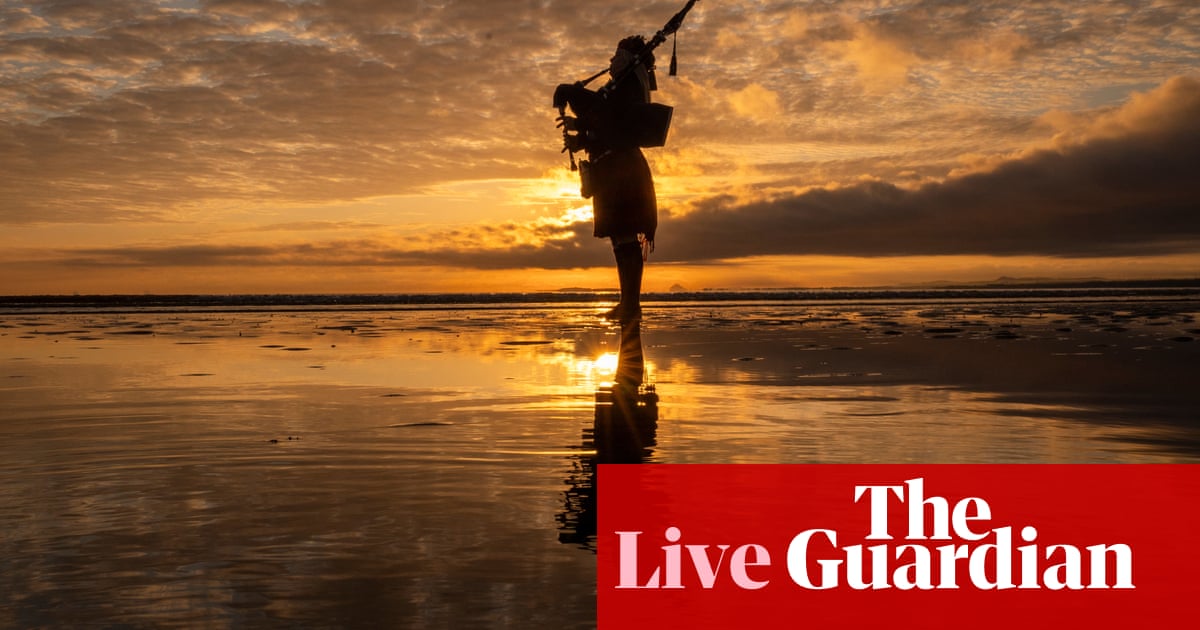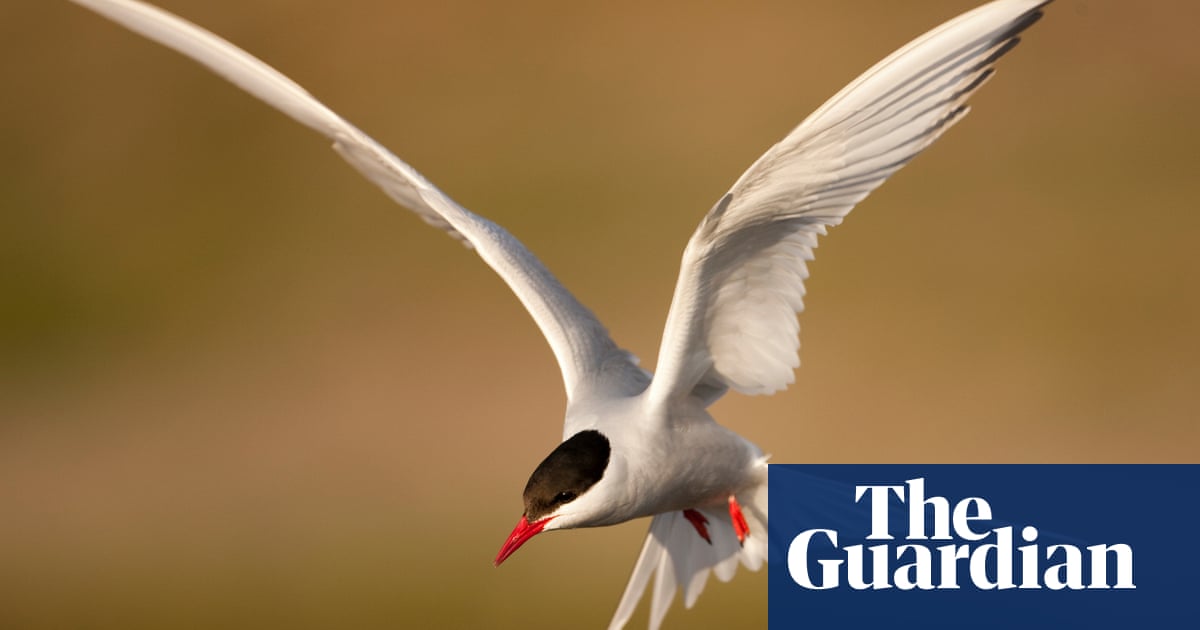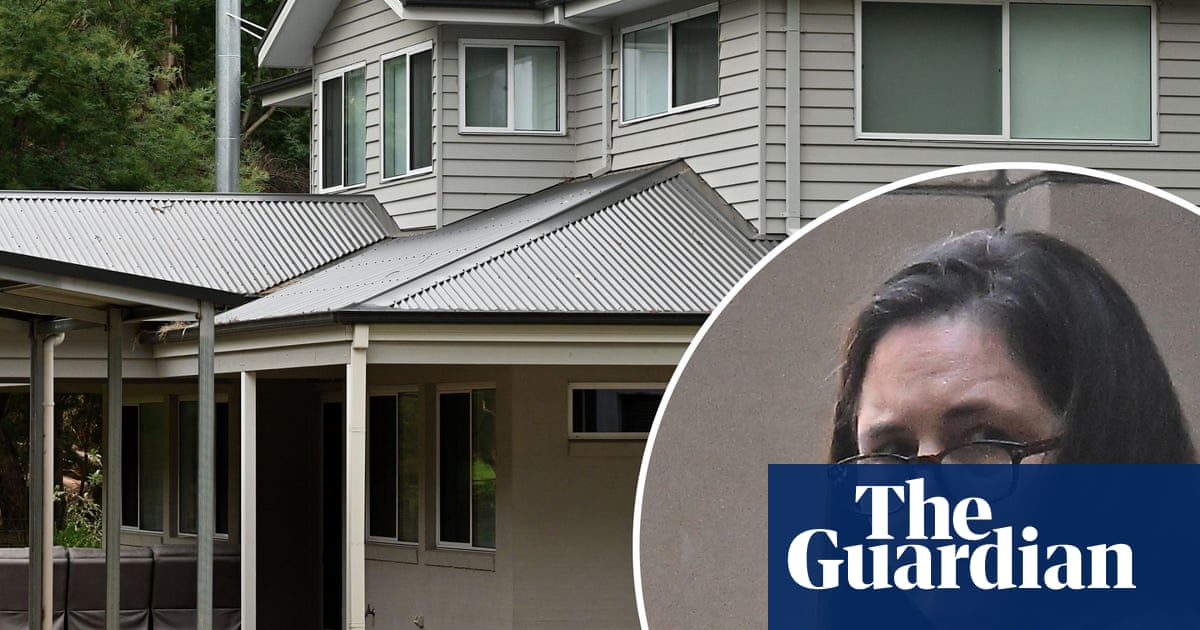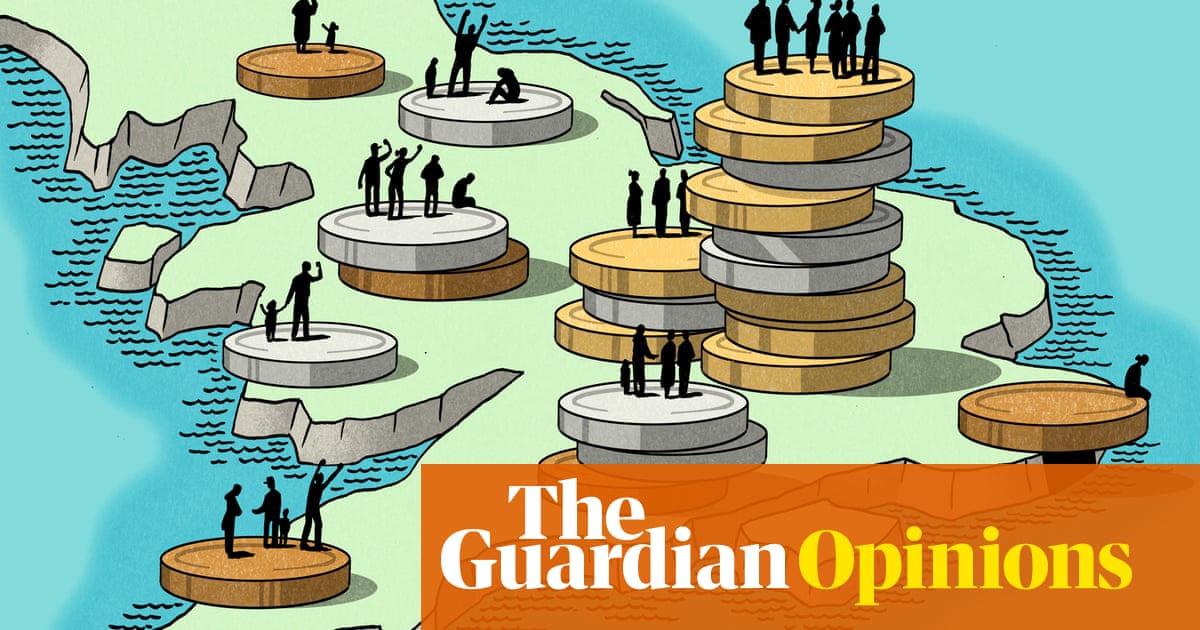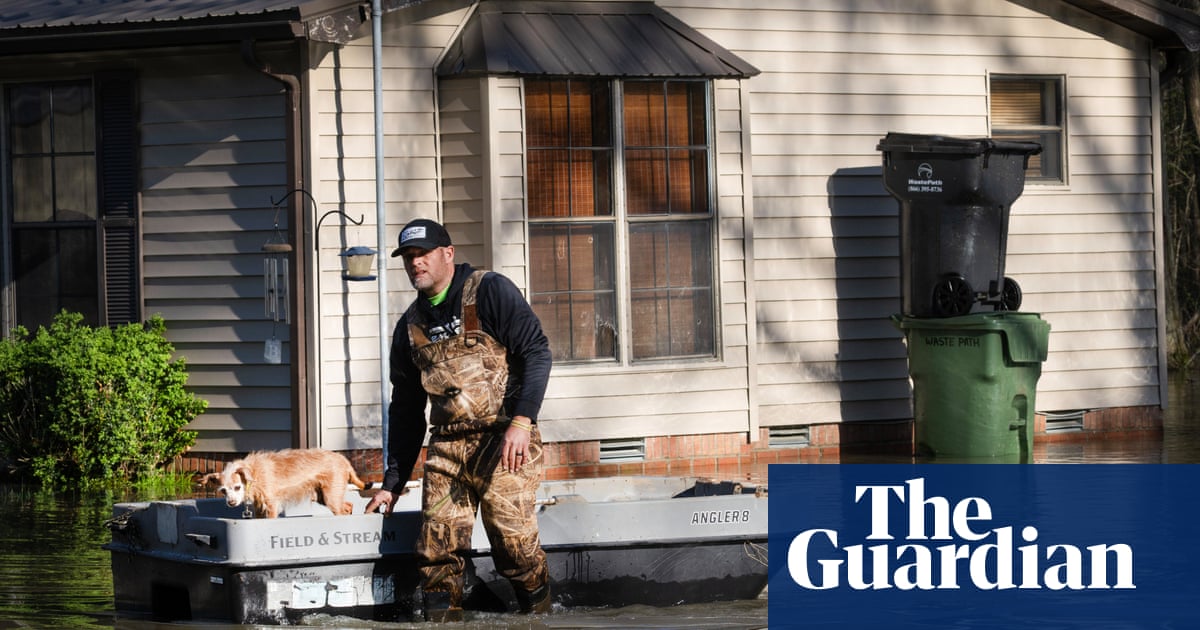I’m woken by a tractor uprooting jersey royals in the potato field next door. In my simple hexagonal room, dawn illuminates five high slit windows marked with military coordinates and a compass etched into the ceiling. But heading downstairs, I timeslip into a 19th-century lounge where gothic-style windows frame sea views in three directions.
During the second world war, Jersey’s occupying forces requisitioned Nicolle Tower, a whimsical two-storey folly, and added an extra level. In what is now the bedroom, German soldiers kept lookout for an allied invasion that never came.
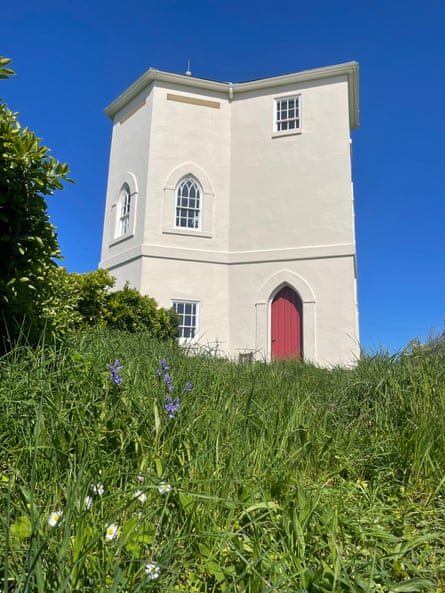
It’s thanks to restoration charity the Landmark Trust that I’m enjoying this hilltop tower. Inland from Le Hocq beach, it is now a self-catering holiday let. It’s unique, yet one of a staggering 1,200 fortifications on Jersey, the Channel Islands having served as a showcase for Hitler’s Atlantic Wall defences. During my 1980s childhood holidays, abandoned bunkers invited exploration and sibling jump scares. Now, on the 80th anniversary of liberation, which came on 9 May 1945 (a day after the German forces on mainland Europe surrendered), I want to discover how some of these structures have found a new lease of life.
I start in an underground hospital hewn into rock. It never treated battle casualties; instead, a postwar farmer used its extensive passages to cultivate mushrooms. Now it houses Jersey War Tunnels, the museum of the island’s almost five-year occupation.
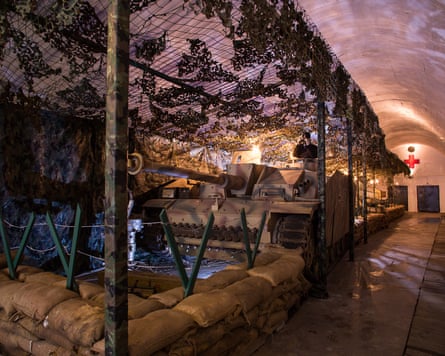
I learn about the scramble for evacuation, how remaining residents swapped meagre rations through newspaper personal ads, and about Organisation Todt, the huge Nazi construction operation that saw hundreds of fortifications built. Hand tool marks can still be seen in half-finished sections of the tunnels, one of which has lighting effects to simulate a rock fall. Elsewhere, amid islanders’ personal stories are interactive exhibits posing the ethical dilemmas they faced, such as whether to launder a German uniform in exchange for food.
That evening, I join nonprofit Jersey War Tours inside a resistance nest set into the sea wall at St Aubin’s Bay. Our guide, Phil Marett, winds a hatch and sweeps the anti-tank gun over a deserted beach, demonstrating how soldiers were primed for a D-day-like scenario.
Inland at Le Coin Varin, a farmer’s field contains a huge block-shaped battle headquarters. Once poorly disguised as a house, its chimneys hid periscopes. Time has laced the outside with vines, but inside, acrid-smelling rooms are blackened by modern fire brigade drills. Nearby, Marett points out an oddly shaped bungalow that the homeowners built around another abandoned bunker.
Waves crash below the wild headland of our final stop, Noirmont Point, where, amid the gorse, a crack of light entices us into Battery Lothringen. In a restored two-storey subterranean command bunker, I note the poignant bunk-side photo of an elderly German man who returned here as a tourist.
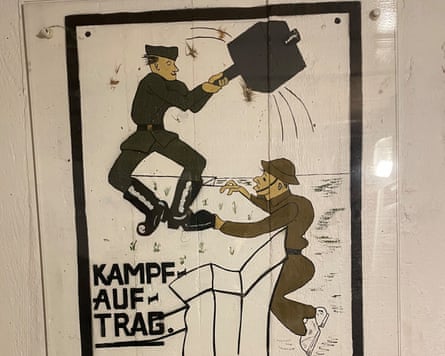
Compared with that austere, imposing space, the cosy hexagonal lounge of Nicolle Tower feels like a trinket box. Its bookcases hold a thoughtful selection relating to Jersey’s nature and history, but having stayed in other Landmarks, I seek the logbook first. Completed by visitors, this is part diary, part crowd-sourced guidebook and always charming.
At a sea view writing desk, I turn the pages and smile at former guests’ tales of big birthdays and marriage proposals and a naked yoga session interrupted by a dog walker. Many have left recommendations for walking routes and pubs. A few have contributed affectionate watercolours of the folly.
Next day, I head to Faulkner Fisheries, a fishmonger and cafe based inside a former bunker for 45 years that lies on a rocky peninsula to the north of St Ouen’s Bay, the largest of Jersey’s sandy beaches. Lobsters destined for the lunchtime barbecue shuffle inside seawater pools flushed via pipes converted from wartime ventilation shafts. “In the end tank, where the crabs are, there was a gun pointed towards Guernsey,” owner Sean Faulkner tells me as he shows me around. “The office was originally another machine gun post.”
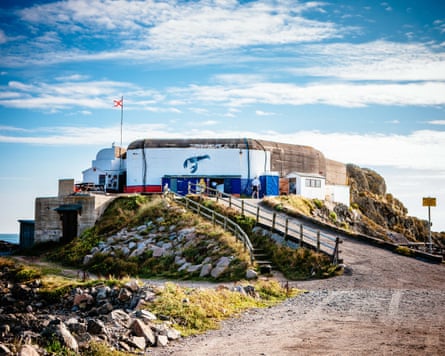
Faulkner grew up on a farm opposite, playing in the bunker as a child and diving for crabs to sell from a junkyard pram. After a career in the merchant navy, his youthful exploits became his business. As I enjoy huge, garlicky scallops at a picnic table, watching the waves glint in the sunlight, the plump seafood, barbecue aroma and 5-mile (8km) surfing beach suddenly recall Australia.
after newsletter promotion
Later, on a cobbled slipway, I spot a smaller bunker housing boards and wetsuits. Jersey Surf School is painted on its original, still sturdy metal doors. Water ingress is never a problem, owner Jake Powell tells me, before reminiscing about teenage parties around a bar he constructed in another bunker.
Jersey’s vast tidal range reveals extensive rockpools, not least at La Corbière lighthouse, where I linger for the celebrated sunset view. Standing sentinel opposite is the Radio Tower, a German range-finding post. For years, a coastguard headquarters, it has since found a third use as holiday accommodation.
The charity Jersey Heritage oversees this and other fortifications, from German-adapted martello towers to a 1940s bunker turned cold war shelter, many open to visitors. Chief executive Jon Carter acknowledges their tourist interest. “They were all built in the most scenic places with the best views because that was the idea – they were observational and they wanted arcs of fire,” he tells me over tea.

The metres-thick reinforced concrete of these mass bunkers makes their destruction unviable. The mixture of abandonment, historical reconstruction and pragmatic reuse I’ve seen reflects decades of fluctuating attitudes. Any continued discomfort about the structures’ presence is now less about why they were built than how, Carter explains. The back-breaking work often fell to prisoners of war and forced labourers.
At the government’s behest, Jersey Heritage is working with volunteer preservationists the Channel Islands Occupation Society to consider the reuse of 70 state-owned fortifications too, connecting with those “wrestling with the same conundrums” along the Atlantic Wall. Carter anticipates a continued mixture of “selective preservation” and “contemporary use”.
Next, I visit the island’s newest fortification museum St Catherine’s Bunker, which Marett dubs “a real Bond villain lair”. Its cliff-face gun post fronts substantial German-built tunnels. For years, though, this was a fish market. Like the bunker turned toilets I discover on my childhood beach, it feels an ironic counterpoint to hubris.
Ten minutes away, I lunch at Driftwood Cafe at Archirondel Beach. As I tuck into thick crab sandwiches opposite the French coast, fisherwoman and cafe owner Gabby Mason tells me she’ll be at sea over the Liberation 80 weekend, her boat decked in flags. From today into next week, there will be street parties, an international music festival and historical re-enactments, including, in St Helier, British soldiers raising the union jack above Liberation Square, so named in 1995 to celebrate 50 years since the end of occupation.
The Landmark Trust is also celebrating – 60 years of restorations. Before I leave Nicolle Tower, I take in those glorious views a final time and add a logbook entry, my own sliver in the multilayered history of this building and this island.
This trip was facilitated by the Landmark Trust and Visit Jersey. Nicolle Tower sleeps two and is available from £180 for four nights.

 4 hours ago
7
4 hours ago
7









